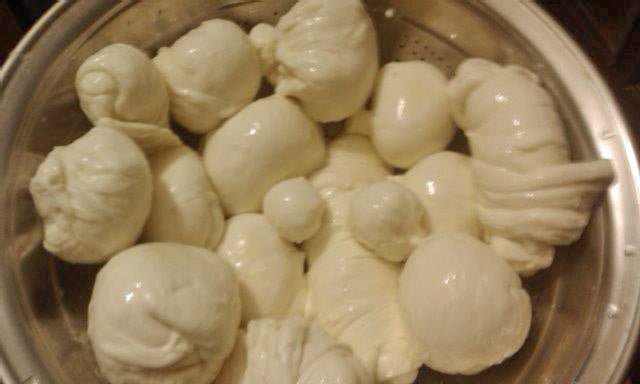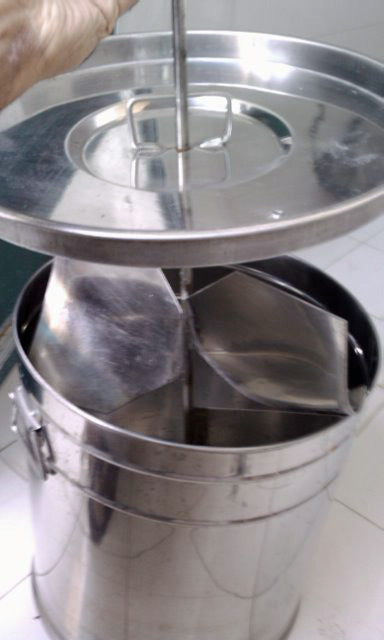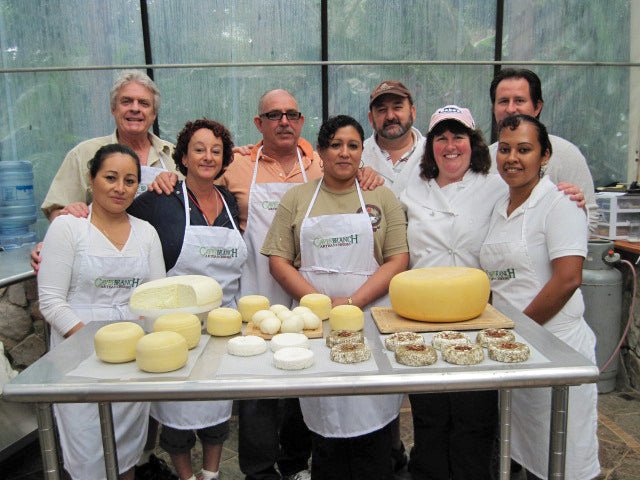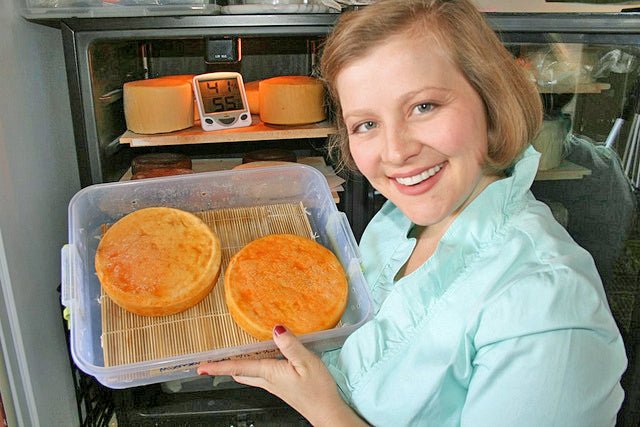Sheikh Imran Saleh
Recently we received a few comments and pictures on our Facebook page from a Pakistani cheese maker in Lahore. I thought that was interesting, so I asked him if he would be willing to answer a few questions for this article. I was honored when he agreed to this and I am eager to share what I learned with you …
What does it mean to be a Sheikh?
I am Imran Saleh, a 46 year old businessman from Pakistan. In Pakistan, Sheikh is a cast, a family name. It originated from India. This cast mostly consists of businessmen and well educated people. I am a small scale businessman and I deal in PVC and rubber pipes. Cheese making is a weekend hobby, so far.
 |
| Imran and his wife, Ayesha |
How did you become a cheese maker?
Two years ago, I decided to make cheese. Mozzarella was my ideal. Perhaps I got this temptation from pizza, as my whole family (like everybody else) loves pizza. I have a big pizza oven fixed in my kitchen.
 |
| Imran’s kitchen (note the pizza oven to the left of the stove) |
I started with 10 kg milk (2.6 gallons). But, after a few attempts, what I made was cottage cheese. I started searching on Google and realized that making cheese is an art which needs practice and patience. I searched and searched hundreds of sites and blogs and articles. I went through various researches done by experts. It took me months. (My employees thought that I was busy with my clients on the Net!)
In Pakistan, it’s mostly hot weather and cheese cultures do not exist. I used to be in the kitchen at 1 a.m. because during the day I was in my office. My kids might have thought that I was going insane with the age factor. But I continued ….
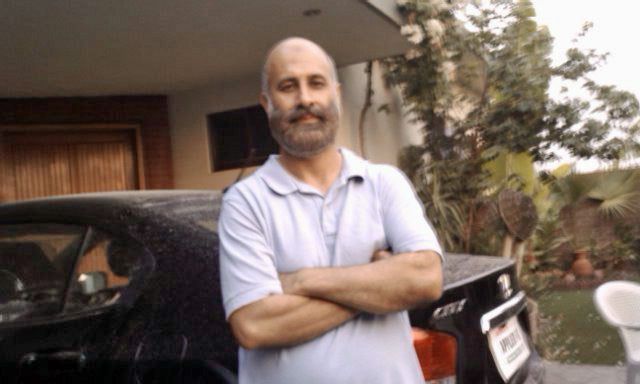 |
The thing I realized I was missing was rennet. In Pakistan nobody knew what it was. After long research, I tried with thistle and other plants, but all in vain. Then I ordered one strip of rennet tablets from a cheese making company in the UK.
Four desperate weeks of waiting. But when I got the first clean break, I thought I had won the war! My first batch of Mozzarella was successful. But a series of failures followed. This was when my wife said she had had enough with cheese and no more cheese in the kitchen! So I made a small cheese lab at the back of my house.
Now, I decided to make the cheese vat first. I bought a steel container
and another bigger container for making it a double jacket.
I always got upset with spinning the curds with a wooden ladle. So I worked on an idea- I took a steel rod, inserted it in the middle of the steel bowl’s lid, fixed the inner part with steel blades and placed it through a bearing for easy rotation. This I did with the help of a fabricator.
This machine worked great. Now, no more wooden ladle or bare hands in the curds. I just cut the custard in squares with a cutter which I made too, and then put the lid on top so the blades insert in the curds. Now, I rotate the handle for 2-3 minutes, then re-rotate after 10 minutes and this I do 3 times.
I also started keeping a record of my trials on a white board and then on the computer.
I suddenly came across your site. I found it simple and informative. I went through it hundreds of times. I kept all the things straight according to the procedures written. Once Jim (Jim Wallace, our technical advisor) gave me some useful advice on my request, for which I am grateful to him.
Everything went right but only one success in four trials with 25 liters milk (6.6 gallons) was achieved. I was not satisfied, because the overall failure ratio was 75%.
One day I drained the whey as much as I could and left the curds in the bowl for 5 hrs at 38C (100.4F).
Now, when I checked, the ph value was 5.3. I worked it into a successful Mozzarella. Since that day I rarely mess up with the cheese.
I posted some pictures on your Facebook wall last year. Now it’s one year and I make a perfect Mozzarella. My wife and kids love it. Especially my daughter, Mahreen who participates with me. I also made some Cheddar and a press of my own. The result was good.
 |
| Imran’s daughter, Mahreen |
 |
| Imran made this press by welding two pieces of pipe together. He says it works great. |
I want to share with you something. Pakistan is a heaven for milk. Raw milk is available in abundance.
I was not successful with citric acid which is different here than in other countries (I believe). I used fresh yogurt called dahi as culture. The result was extraordinary. This dahi is also found at every corner of the streets. And people prefer eating this to packed yogurt.
Dahi is used as food and it is used by almost the whole population. Due to its large scale usage, it is made and sold at
every corner of the street.
Like other yogurts, it is made from its mother culture – no junket tablets are used. It’s sweet with a little bit of sourness. For a long time, I tried cheese with citric acid but
the results were never constant, and with dahi the result was always 100%. Again, to figure out this, I had do a lot of trials. I just use 1/4 tsp mixed with milk in a cup for 25 liters (6.6 gallons) of milk. It takes 60 minutes for ripening.
I want to share an experience – how I got a messed up process right. Last Sunday, I tried to make Cheddar
cheese (in my kitchen). For mesophilic culture, I kept a glass jar filled with raw milk for 3 days. Whey was separated, which I
mixed again by shaking the jar. Into 10 liters (2.6 gallons) of cow’s milk I added 4 ounces of this culture at 88F. After 1 hour, I added rennet. But 1 hour passed and the milk did not turn into gel. I was confused. What to do now?
Eventually, I added 1/10 of tsp of dahi (diluted) in the milk and stirred it for a minute. After 40 minutes, it was partially set. I was bothered, but as I had to go somewhere and I was not willing to leave the milk like this for a long time, I stirred the curds ( which resembled yogurt) a couple of times, raising the temperature to 98F. I did the rest of the process for Mozzarella cheese at 5.3 pH. I tried it for a stretch and WOW! It was amazing. A nice Mozzarella with great taste was formed, which was half gulped by the kids, as soon as it was made.
 |
| Imran’s Mozzarella |
What is the overall cheese situation in Pakistan?
In Pakistan the pizza industry is growing like mushrooms. All the big chains like Pizza Hut and Dominoes have opened
their branches in big cities. Only one company, Adams, is manufacturing cheese here. It’s Mozzarella is not good at all, but it is used by almost all
the pizza stores except the big chains. They import so there is a big scope for cheese manufacturing in Pakistan.
Unfortunately, cheese making is not so “in” here. Individually, people may try, but being an expensive hobby, because of it’s uncertain outcome, it is not appreciated. But I am
sure if someone gives awareness about cheese and does some homework on it, people will definitely love making it at home. As our women are mostly
housewives and their best hobby is making food, I believe they will welcome this new hobby.
Thanks for being patient enough to read my story.






























